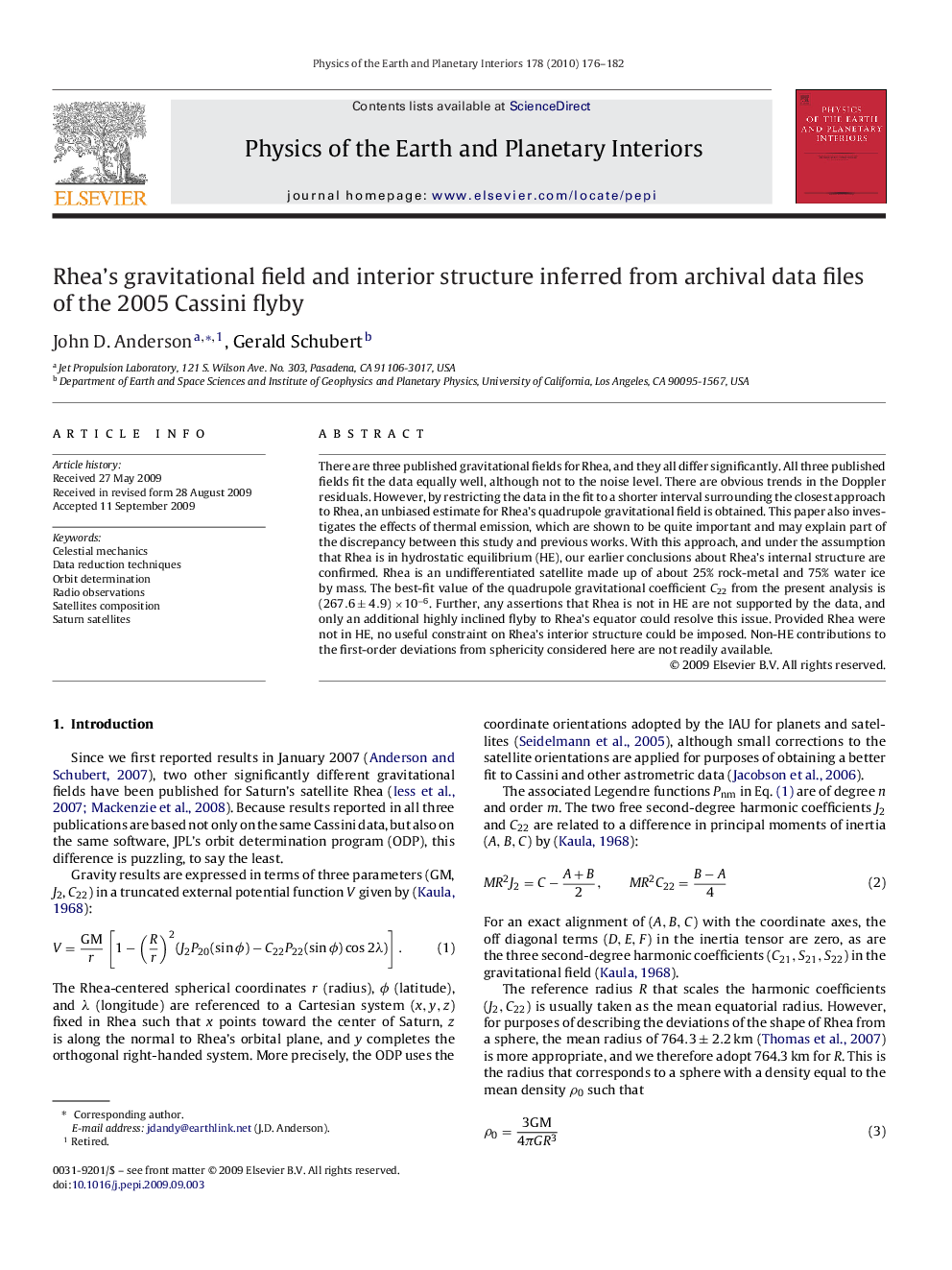| Article ID | Journal | Published Year | Pages | File Type |
|---|---|---|---|---|
| 4742217 | Physics of the Earth and Planetary Interiors | 2010 | 7 Pages |
Abstract
There are three published gravitational fields for Rhea, and they all differ significantly. All three published fields fit the data equally well, although not to the noise level. There are obvious trends in the Doppler residuals. However, by restricting the data in the fit to a shorter interval surrounding the closest approach to Rhea, an unbiased estimate for Rhea's quadrupole gravitational field is obtained. This paper also investigates the effects of thermal emission, which are shown to be quite important and may explain part of the discrepancy between this study and previous works. With this approach, and under the assumption that Rhea is in hydrostatic equilibrium (HE), our earlier conclusions about Rhea's internal structure are confirmed. Rhea is an undifferentiated satellite made up of about 25% rock-metal and 75% water ice by mass. The best-fit value of the quadrupole gravitational coefficient C22 from the present analysis is (267.6±4.9) Ã10â6. Further, any assertions that Rhea is not in HE are not supported by the data, and only an additional highly inclined flyby to Rhea's equator could resolve this issue. Provided Rhea were not in HE, no useful constraint on Rhea's interior structure could be imposed. Non-HE contributions to the first-order deviations from sphericity considered here are not readily available.
Related Topics
Physical Sciences and Engineering
Earth and Planetary Sciences
Geophysics
Authors
John D. Anderson, Gerald Schubert,
